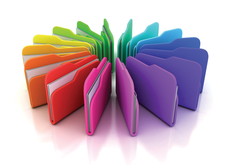A modern diff utility
Command Line – diffoscope

© Lead Image © Vlad Kochelaevskiy, 123RF.com
With support for more than 60 file formats, diffoscope extends the power of diff beyond the plain text or HTML file.
The first command in Unix-like systems for comparing files and directories was diff. Originally written by Douglas McIlroy and first appearing in Unix 5th Edition in 1974, diff rapidly became an essential programming tool. Today, the original command is still available, and most programming languages have their own versions of diff. However, diff and its derivatives generally have one limitation: With few exceptions, most of them work only with plain text or markup languages like HTML. A new variation called diffoscope [1], which was released in mid-2020, brings a new level of functionality to file comparison.
Diffoscope is developed primarily by Debian's Reproducible Builds project [2], which aims to increase the robustness and security of Debian packages by ensuring that they always build the same way. Given Debian's nearly 60,000 packages and the variety of hardware available, this is no small task, especially considering that small errors in code can be hard to trace. Diffoscope was written to make this task easier by quickly tracking down differences between two files that are supposed to be identical but perform differently. As a side effect, diffoscope provides a modern diff utility that works across most programing languages and brings the power of diff to desktop users and non-programmers, especially writers who wish to compare drafts. Already, diffoscope supports over 60 binary formats that range from files and filesystems to audio and text files, including MS Word, LibreOffice Writer, and PDF (Table 1). And more seem likely to follow.
Diffoscope's basic command structure is:
[...]
Buy Linux Magazine
Subscribe to our Linux Newsletters
Find Linux and Open Source Jobs
Subscribe to our ADMIN Newsletters
Support Our Work
Linux Magazine content is made possible with support from readers like you. Please consider contributing when you’ve found an article to be beneficial.

News
-
Parrot OS Switches to KDE Plasma Desktop
Yet another distro is making the move to the KDE Plasma desktop.
-
TUXEDO Announces Gemini 17
TUXEDO Computers has released the fourth generation of its Gemini laptop with plenty of updates.
-
Two New Distros Adopt Enlightenment
MX Moksha and AV Linux 25 join ranks with Bodhi Linux and embrace the Enlightenment desktop.
-
Solus Linux 4.8 Removes Python 2
Solus Linux 4.8 has been released with the latest Linux kernel, updated desktops, and a key removal.
-
Zorin OS 18 Hits over a Million Downloads
If you doubt Linux isn't gaining popularity, you only have to look at Zorin OS's download numbers.
-
TUXEDO Computers Scraps Snapdragon X1E-Based Laptop
Due to issues with a Snapdragon CPU, TUXEDO Computers has cancelled its plans to release a laptop based on this elite hardware.
-
Debian Unleashes Debian Libre Live
Debian Libre Live keeps your machine free of proprietary software.
-
Valve Announces Pending Release of Steam Machine
Shout it to the heavens: Steam Machine, powered by Linux, is set to arrive in 2026.
-
Happy Birthday, ADMIN Magazine!
ADMIN is celebrating its 15th anniversary with issue #90.
-
Another Linux Malware Discovered
Russian hackers use Hyper-V to hide malware within Linux virtual machines.

